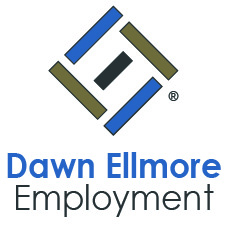The world of software and electronic storage IP is a complicated one. Databases exist around the edges in terms of whether they can be protected or not, when it comes to ownership and originality.
While database rights have been debated by the courts for a long time, those in cloud based technology haven’t. So, are there database rights within a cloud database? A decision handed down in August 2017 shows that the High Court tackled this issue earlier this year.
Technomed Ltd v Bluecrest Health Screening Ltd
This case involved electrocardiograms (ECG) and the subsequent analysis of data collected through the measurements. An ECG is used to measure the passage of electricity through the heart, which then gives details of the organ’s health based on the tech used.
Technomed is a supplier of ECG systems, services and equipment including an analytic and reporting system called the ‘ECG Cloud’. The cloud based platform allows information from ECG measurements to be analysed externally (by a qualified cardiologist), eventually producing a colour coded analysis of the heart in question.
The analysis is carried out utilising resources and information in Technomed’s database, including the issues and characteristics of ECG readings. Technomed licenced the technology to Bluecrest Health Screening. After the business relationship broke down, proceedings went ahead to protect the rights within the database and its reporting format which had been passed on to a competitor by Bluecrest.
Sui generis rights
The case focused on the ‘sui generis’ rights within the database. This means the protection of the time, effort and money that went into the database, copyright in the software that reports the ECG results, and copyright in other various elements of the system.
The judge concluded that the database was indeed a database defined under the Database Directive. This means that he agreed that Technomed’s database was “…a collection of independent works, data or other materials arranged in a systematic or methodical way and individually accessible by electronic or other means”.
However, the onus was on Technomed to establish a sui generis right in that database. This is where the maker (in this case Technomed) demonstrates that substantial investment went into obtaining, presenting and verifying the data used in the database. The court determined that this was the case and afforded Technomed a sui generis right in the database.
Infringement of sui generis rights
Bluecrest had extracted the entire database and then provided it to a competitor, and this was found to infringe on Technomed’s sui generis rights in the database. Furthermore, if a third party repeatedly used and reproduced the database, this would also be an infringement.
Bluecrest had repeatedly produced reports from the database information, which prejudiced Technomed’s legitimate rights to the database until the reports were updated in 2016, and no longer infringed the database.
Copyright in the database
Under Section 3A of the Copyright, Designs and Patents Act 1988, the judge concluded that the database did have copyright in it, and that this copyright had also been infringed. He also determined that a PDF copy of the database was a literary work and that this was infringed by Bluecrest also.
In terms of the XML reports, in order to be protected they have to be “the author’s own intellectual creation”. While no rights were claimed in the XML format, the reports were judged to contain the personal ‘stamp’ of the creators and therefore the judge found them to be protected by copyright. As Bluecrest had a competitor copy the report format, this also counted as infringement.
Causation argument
Bluecrest fought back by arguing that they caused no damage to Technomed through the infringement alleged against them. The judge dismissed this, as the clear infringements would have resulted in a loss for Technomed.
The final conclusion was that all of the rights in the works had been infringed by Bluecrest, but that there was no continuing threat of infringement.
Dawn Ellmore Employment recruits for patent and trade mark attorneys, matching them up with roles in firms and at in-house positions. Engaging a patent attorney when dealing with database information is vital. Understanding the potential for infringements is important to avoid legal problems down the line. This case is a good example of the strength of the potential for database rights to be infringed.
About Dawn Ellmore Employment
Dawn Ellmore Employment was incorporated in 1995 and is a market leader in intellectual property and legal recruitment.
Head over to Dawn Ellmore Employment’s blog page now. Created in the aim to keep you abreast of current Intellectual Property (IP) and Legal developments along with industry and career insights.


